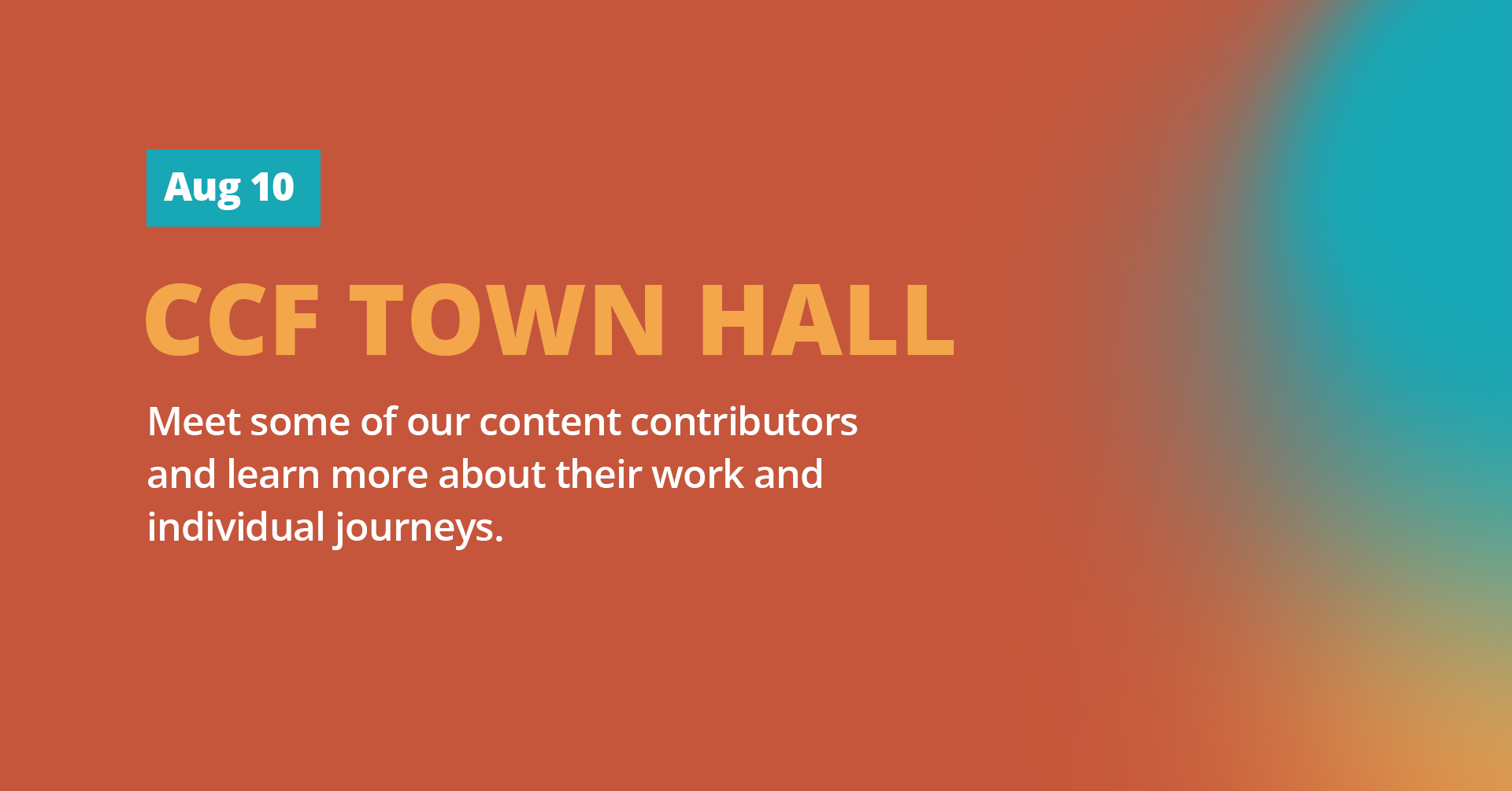Four months into a previous job as a volunteer manager at one of the oldest nonprofit organizations in the region, I sat down to talk with one white mentor, who privately shared his prejudice toward his Black mentees.
He wasn’t the last to do so.
When I first started, colleagues told me about racist incidents that had occurred at the organization: fundraisers where Black parents were asked to stay downstairs while their children performed music for white donors upstairs, an incident where a white volunteer called a Black child an “African queen,” how white children from wealthy private schools were invited to come and ‘teach’ Black children, white families who were matched with Black families to “mentor” them …
It was within this setting that I realized how we as volunteer managers are so often complicit in this insidious culture.
It was also these experiences that challenged me to be better and do more as a white anti-racist in the nonprofit sector. I’ve spent the last several years questioning the ‘best practices’ and unlearning much of the gospel of nonprofit management that I spent my early career condoning. What I now know is that we as volunteer managers should be among those leading the charge in the transformation of our sector.
Although volunteer managers are not always considered fundraising staff, we share our fundraising colleagues’ strength of trusted relationships with everyone who plays a role in the organization’s ecosystem: staff, clients, community members, leaders, donors, volunteers, and partners. Our unique opportunity, however, is that we are already familiar with the concept of community-centrism.
Volunteer managers are community-builders
Volunteer managers must think of ourselves as community builders, and our organizations as communities where individuals come together and work toward a common purpose.
When we label community members as “volunteer,” “donor,” “client,” or “staff,” we assign them to positions in a hierarchy, with power dynamics, and miss out on the opportunity to engage them more deeply and fully. A deeper engagement means authentic relationships between community members, where we learn from each other and hold each other accountable for our words and actions. All of us within the organization are capable of transforming the organization.
At the organization I mentioned earlier, children were eligible for services if their family’s income fell within a modest percentage of the poverty line. This meant that families were frequently characterized by descriptors like single parent households, adults working multiple jobs, or from Black or communities of color. Parents or guardians from these families would often bring treats for their child’s birthday or support family events, but were not recruited to volunteer in any other way.
When I suggested that family members should be regularly invited and encouraged to volunteer in the organization, and even recruited for leadership roles (for instance, as board members), I often met resistance and explicit prejudice. Colleagues would say, “They don’t follow through.” A coworker once explained to me that he knew it was time to ‘take the reins’ from family members at events after a family member made announcements with curlers in her hair.
A board member once told me, “They don’t have enough experience to be on the board.”
I responded by telling her about one of my suggested prospects, a current family member who worked at a university and had initiated a partnership with our organization. The board member’s response was one of surprise, indicating that she clearly had never met any of our family members.
Shortly after this conversation, the board began to consider family members in their recruitment.
Let me be clear: I have been very fortunate to work for organizations where my ideas for correcting organizational injustice were typically met with at least some level of receptivity. However, even in these positions, I was never part of the organization’s leadership team.
I should have been. We all should be.
One of my most powerful learning experiences was during my first “listening tour” as a volunteer manager (something that should be part of every volunteer manager’s regular work plan). At the end of my first year, I sent a brief survey to the parents and guardians of the children served by the organization. I wanted to better understand their feelings and experiences with the mentor program I was managing. Most of the feedback was positive.
However, several caregivers noted their child’s disappointment when mentors did not show up. Some had questions about the nature of their child’s meetings with the mentor. But more alarmingly, many did not even know that their child had a mentor.
It was because when the program was established years earlier, no formal parental/guardian permission was required for children to participate.
How did this even happen? Almost anytime a minor is involved, adult consent, if not legally required, is a best practice. Was it assumed that families would not care (or that it didn’t matter if they cared)? Was getting family consent deemed “time consuming” or unnecessary? Were mentors believed to be “do gooders” incapable of harm?
In short, was this, at best, carelessness in the organization — or at worst, another illustration of paternalism and prejudice in the organization?
We need to reject the premise that only some people belong or that only some people can give to the organization more than others.
Volunteer managers are unique among fundraising staff because our job is more focused on “friendraising” than fundraising. We see the ways in which injustice in fundraising is directly connected to programming, and vice versa. Volunteer managers can help our organizations see and realize a vision of a community-centric organization where caring for and building the community is everyone’s responsibility.
Volunteers are more than ‘do-gooders’
Let us recall the origin story of the nonprofit sector as we know it: Religious missions that tended to the poor and sick. Jennifer Ceema Samimi describes our original sin (on page 18):
“As the foundation of the social service industry began to establish its roots in religion against the backdrop of colonialism, the link to funding was also established. However, the idea of social justice, with a focus on the poor, was the target of service provision. Colonial notions of social justice were explicitly pursued by, and related to, the needs of the white settlers in America.”
It’s impossible to separate our modern volunteer programs from these roots.
Ask yourself: Why do our volunteer programs exist to begin with? Who benefits? What message is the organization sending? Our sector is full of volunteer programs that enable or perpetuate prejudice, white saviorism, and oppression — the very things that many of us are trying to uproot.
Take, for example, service learning programs. The organization I previously worked for was located adjacent to the city’s largest urban university, and students looking for opportunities to fulfill their course requirements for service hours (typically in the range of 20 hours for the entire semester) came in droves.
Prior to my arrival, student volunteers, who were barely adults, were ushered in to work in direct contact with children, without so much as an orientation. Background checks were inconsistent. Student volunteers would show up for an hour or two as they were available, leaving after their service requirements had been fulfilled with fantastical memories of their time spent with the children, who on the other hand barely remembered the volunteers.
If I had a dime for every time I heard a volunteer say, “It’s so nice to get away from the stress of campus!” …
My first move in the job was to close the gates until a consistent and more rigorous onboarding process could be implemented. My supervisor, the head of development, put trust in me as a new employee for two months as not a single new volunteer entered the organization. (Development directors, take note.)
Once established, the new onboarding process required an application, interview, background check, and orientation, as well as position-specific training and other requirements. Volunteers who wanted to work directly with children were required to commit to no less than one year of weekly service. When these requirements were found to be still insufficient to ensure consistency in the mentorship program, position requirements were changed to require two years commitment and for volunteers to be at least 21 years of age.
Cultural humility, acknowledging bias and prejudice, and systems change are not skills to be learned in a one-time training; they are an ongoing process of learning and self-reflection. We provided access to ongoing training in trauma-informed care and social justice, and I personally met with every single volunteer twice a year to share updates, revisit their commitment, and provide coaching.
This kind of effort is not possible without high expectations of volunteers.
Did we have fewer volunteers? Yes. Were our volunteers more committed to and engaged in the organization? Also yes.
And yet, we could have gone further.
In the mentorship program I managed, volunteers were expected to come once a week, for thirty minutes, to eat lunch and hang out with their mentees. In my first year, there were more people who did not follow through with this than who did. After repeatedly facing one pair of disappointed children whose mentor would often no-show, I confronted the mentor (who was also a white donor), conveying the feelings of his mentees.
And while my supervisor supported me by saying things like, “Even donors have to follow through on their expectations,” I often felt like the lone justice ranger with volunteers, setting the rules and holding them accountable when no one else in the organization would. Where was the rest of the community?
When we say yes to transactional organizations, we say no to community-centric organizations
Why do we as volunteer managers bend so much toward transactions, when we have so much to gain from relationships? Why do our organizations do the same?
When I entered the sector 10 years ago, any volunteer management association meeting would inevitably feature collective lamentation over the rise of episodic volunteers. But this has really never been challenged.
Service learning, voluntourism, corporate volunteerism, and even our legal system have contributed to this trend. While serving as an AmeriCorps member at HandsOn Greater Richmond immediately after college, I helped organizations invent projects for these transactional volunteers and pushed back on them when they did not want to accept court-ordered volunteers or youth/student volunteers (little did I know).
As the volunteer hub for our region, we received calls from hundreds of volunteers every year who had been ordered by a court to complete “community service hours” for a criminal violation. Courts do not consult with nonprofit organizations before ordering these hours. Yet we are expected to help fulfill them, forced to choose between leaving individuals potentially in violation of their sentence or to betray our organization’s desire for more meaningful engagement.
Allowing our own volunteer programs to be defined only by the service expectations of others maintains our complicity with transactional fundraising and volunteerism. It’s not that episodic volunteers can’t make valuable contributions, or can’t be part of a community-centric model; it’s, how are we responding to these pressures?
As a volunteer manager, I often found myself worrying about the volunteers I was saying “no” to. But what I realized is that by saying “no” to some things, I was also saying “yes” to a new vision of volunteerism.
There has been a movement among volunteer managers for decades to professionalize and self-advocate. But this is only teaching us to play within the existing system. It is true that we as volunteer managers are severely undervalued — like many front line staff — for our contributions to the organization. But this is an organizational problem, not a self-advocacy problem. In structuring our work in siloed positions that essentially perform the duties of a human resources manager for unpaid, often temporary workers, organizations continue to exploit resources, and all of us miss out on unrealized leadership potential — in both the volunteer manager and the volunteers themselves.
Ironically enough, by aligning ourselves with community-centrism, volunteers get what they want, too: meaningful relationships, a sense that they are making an impact, and belonging to something larger than themselves. Isn’t that what we all want
Ultimately, community-centric fundraising will mean dismantling many of the organizational structures and sector practices that currently exist, including the way we think about volunteerism. This won’t happen overnight. Although many of us would prefer to just “burn it down,” history has taught us that true cultural and societal transformation will require many steps and a lot of relational power. Volunteer managers, we know what we need to do. As my daughter’s “A is for Activist” board book says, “Yes to what we want. No to what must go!”




